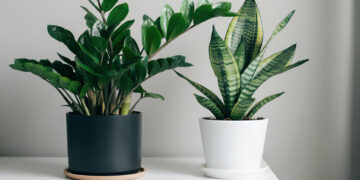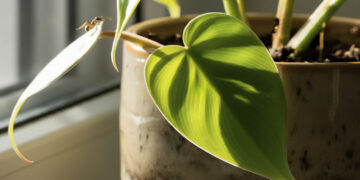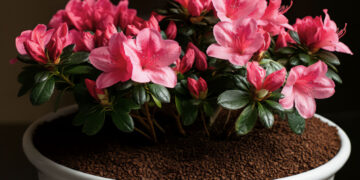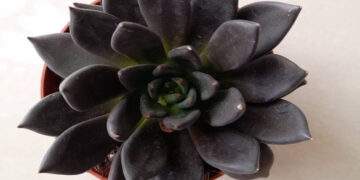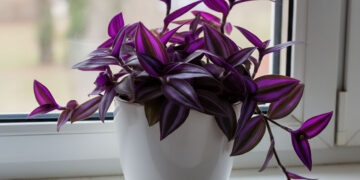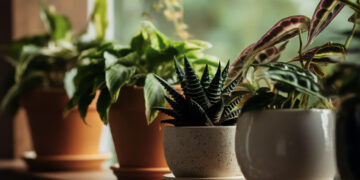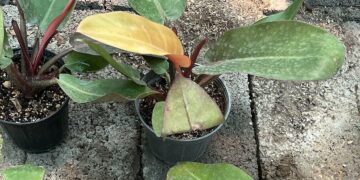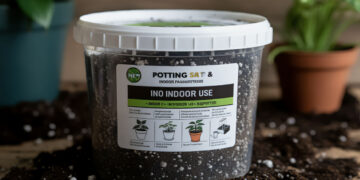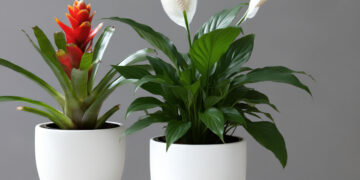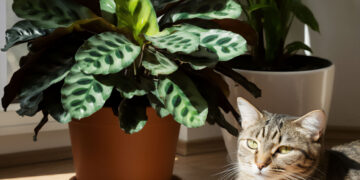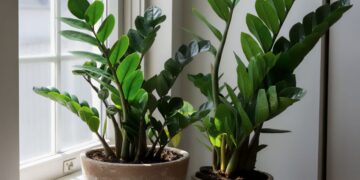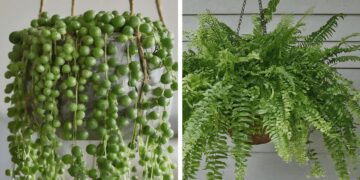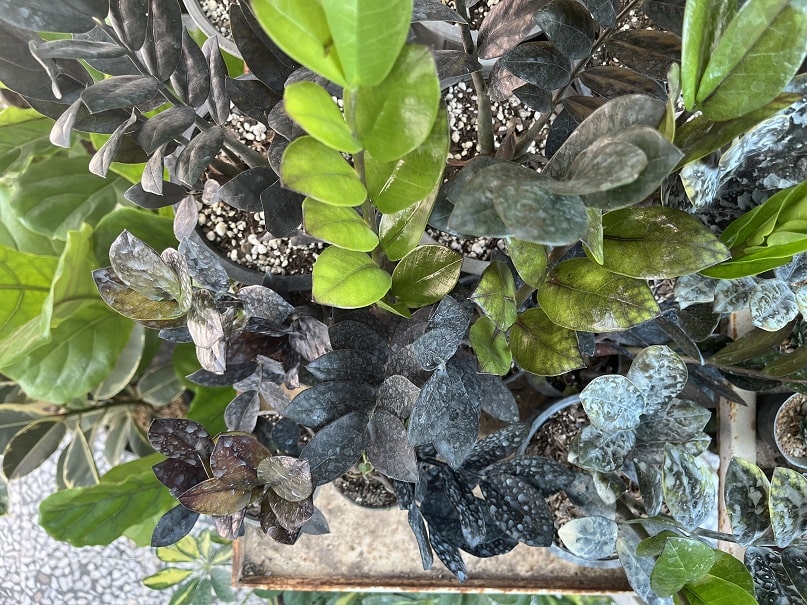
Welcome to the world of ZZ plants, where the plant is more than just a green addition to your indoor space. Originating from Eastern Africa, this plant has garnered widespread popularity for its striking, glossy leaves and architectural beauty. Its resilience and adaptability make it a favored choice for both seasoned plant enthusiasts and beginners alike.
It offers an array of different benefits, ranging from its aesthetic and visual appeal, to air pollution control by purifying the air, as well as requiring little maintenance due to its nature.
In this paper, you will read about my personal experience as well as different variants of the plant, from its classic to rare forms.
Diverse World of ZZ Plant Varieties
As a person with a huge enthusiasm for the world of plants and years of experience dealing with and caring for a diverse variety of ZZ plants, I’ve found it to be both rewarding and joyful.
Each variety brings its unique features and character to any setting, whether it’s a cozy home corner or a bustling office space.
Zanzibar Gem (standard ZZ Plant)
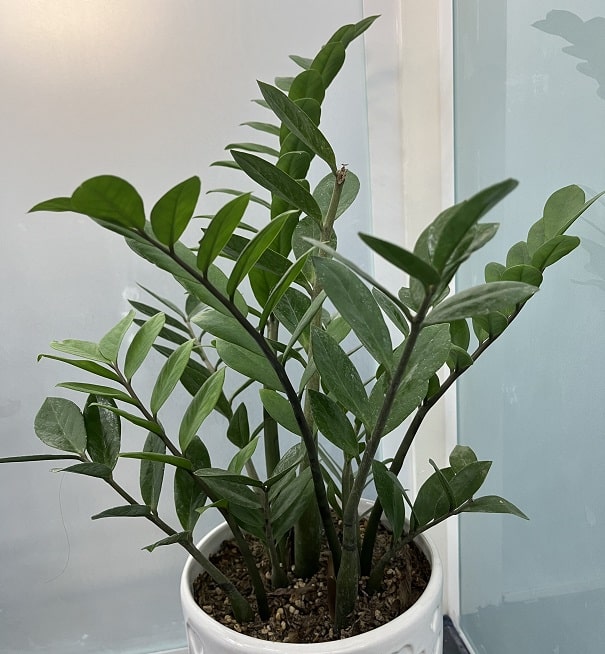
The most well-known variation is the Zanzibar Gem, also known as the standard ZZ plant. It features glossy, mid-green, lance-shaped leaves that evoke a tropical ambiance.
This variety is favored by both novice and expert plant enthusiasts for its exceptional versatility and ability to thrive in various lighting conditions.
Raven ZZ Plant
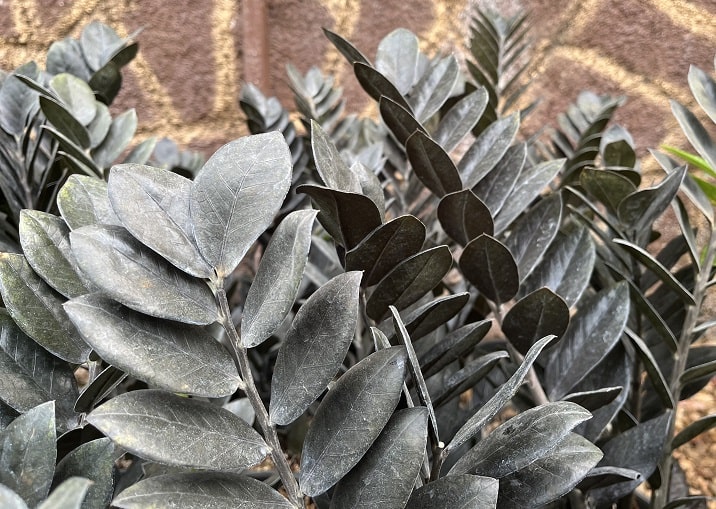
With its glossy, violet-black leaves, the Raven ZZ plant is distinctive. This type undergoes an amazing color transformation; new growth starts as a vibrant lime green and gradually darkens to a rich, almost black hue.
The contrast between the immature and mature leaves creates a highly striking display. It’s the perfect choice for adding a touch of elegance to any space.
Zenzi ZZ Plant
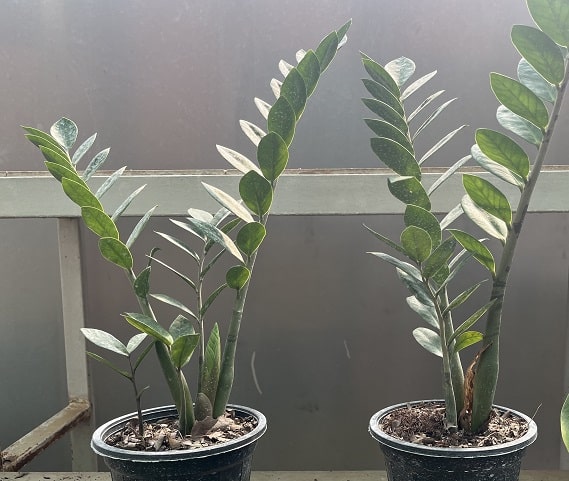
This compact variety is ideal for tabletops or cramped areas. It is a wonderful addition to any plant collection because of its thick growth habit and tiny leaves.
Chameleon ZZ Plant
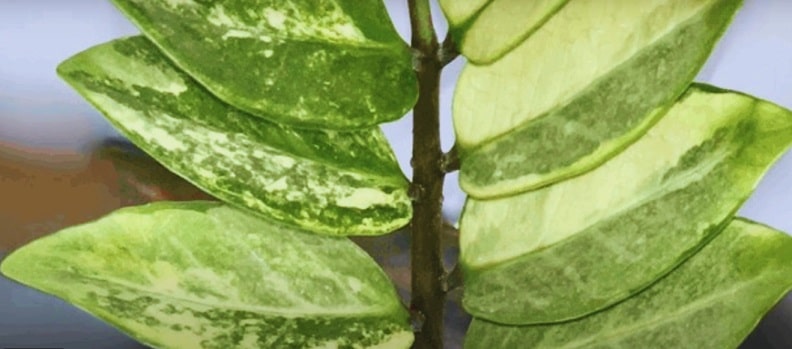
This plant differs by its leaves, which display varying tones of bright and dark green, with occasional touches of gold or yellow. Add some dynamic touch to any collection with this captivating variety.
Other Variations of ZZ Plants
With a wide range of alternatives to suit various indoor conditions and tastes, the ZZ plant family exhibits remarkable diversity.
Among them, the Variegated ZZ plant stands out, boasting captivating leaves patterned with yellow, white, and green. It thrives in well-lit spaces, requiring slightly lighter to maintain its striking variegation.
The ZZ Zamicro emerges as an ideal solution for those contending with space limitations. Featuring dark-green, feathery leaves, this compact variety, which typically reaches heights of 1-3 feet, is perfect for small spaces or desks without compromising visual appeal.
The enchanting Super Nova variety emanates energy with its constantly shifting leaf colors, ranging from bright green to deep tones, imparting a sense of evolution to its appearance.
The collection’s diversity and visual appeal are further exemplified by the unique Dowon ZZ plant, characterized by its wavy leaves, and the vibrant Akebono, adorned with green and yellow foliage.
Standing out among other ZZ plant varieties due to their vigorous growth and subdued leaf colors are the Lucky White ZZ Plant and Jungle Warrior ZZ Plant. For enthusiasts favoring darker plants, the Dark Zamicro, with its tiny, nearly black leaves, presents an intriguing, moodier option.
In addition to lending distinctive charm to interior spaces, these ZZ plant variants are highly regarded for their low-maintenance care requirements, appealing to both novice and seasoned plant enthusiasts alike.
Whether it’s vivid variegations or graceful simplicity in compact forms, there’s a ZZ plant to suit every taste and interior environment. Their versatility and resilience further enhance their allure, transforming any indoor space into a lush sanctuary brimming with character and charm.
Exploring the world of ZZ plants reveals that each type enriches your surroundings with more than just greenery; they infuse your indoor garden with personality, stories, and vitality.
Caring for Your ZZ Plant
How to care for a ZZ plant? The key to thriving ZZ Plant care involves providing it with low to bright indirect light, minimal watering only when the soil is dry, and well-draining soil. This simple regimen ensures its growth and health.
This plant’s resilience and ease of care contribute to its popularity. As we delve deeper into the specifics of nurturing a ZZ plant, you’ll discover just how effortlessly it can add a touch of elegance and intrigue to your home or office.
Lighting is a key factor in ZZ plant care. They prefer bright, indirect light but can tolerate lower light conditions, making them versatile for different areas in your home or office.
Avoid direct sunlight, as it can scorch their leaves. The ZZ plant needs a meticulous approach to watering, a sine qua non of the principle of ‘less is more.’ Thanks to its water-storing rhizomes, it can hold water quite efficiently and survive long periods of drought, making frequent watering needless.
The rule of thumb is to allow the soil to completely dry out between waterings. Typically, this translates to watering every 2-3 weeks, depending on the humidity and light conditions of your home. Be warned that overwatering is a common pitfall.
The ZZ Plant is remarkably adaptable, thriving across a spectrum of light conditions, from the dim corners of a room to spaces bathed in bright, indirect sunlight.
It is worth warning that direct sunlight, especially during the harsh midday hours, should be avoided to prevent the leaves from getting scorched.
Propagation Techniques for ZZ Plants
Doing it is quite rewarding, and despite being a slow plant, its propagation is easy and can be done via two methods: division and leaf cutting.
Division:
A suitable method if repotting the ZZ plant is intended. Carefully remove the plant from the old pot and separate the rhizomes. Make sure each division of the rhizomes possesses a portion of the root system with them.
Plant each division in a suitable soil mix, in their respective pots. Water them until new growth appears. Watering should be sufficient and sparing.
Leaf cutting:
In this simple method, you choose a mature leaf and cut from its base (where it’s attached to the stem), then put the leaf into a jar of water or into a soil-filled pot.
Make sure the quality of the soil is suitable and matches the Raven ZZ plant’s requirements. Roots are expected to be generated in a few weeks when you can then transplant into the soil.
Common Issues and Solutions for ZZ Plants
Although the plant is known to be resistant and dynamic, it is far from being immune to everything. So, understanding those pitfalls and their solutions will guarantee the wellbeing of the plant and its growth.
This is the most common trouble, leading to root rot. To avoid this, you can check the soil every time you want to water them, and its soil should be dry before watered again. If you notice yellowing leaves or a mushy base, reduce your watering frequency and ensure your pot has adequate drainage.
Underwatering, though less common: when the soil is bone dry, the plant shows curled leaves and appears wilted.
Pests such as spider mites or aphids can infest the plant from time to time. It is advised to treat the infestations as early as possible, by using insecticide soap or neem oil.
To find out about early infestation you should check and inspect the plant regularly, which makes the early diagnosis and less complications.
I’d love to hear from you! Please leave a comment below if you have any questions, experiences, or stories to share.
FAQs
How often should I water my ZZ plant?
Typically, every 2-3 weeks. However, this varies depending on environmental factors like light and humidity. As a general rule, when the topsoil is dry, this means it’s about time.
Are ZZ plants toxic to pets?
Unfortunately, yes. They contain calcium oxalate, which is irritating if contacted directly or ingested.
How fast do ZZ plants grow?
They are slow-growing. Their growth is not noticeable in the short run. However, with proper and constant care, growth can speed up.
Can I use tap water to water my ZZ plant?
Yes, you can use tap water. However, care must be taken for the chlorinated water used, and it’s best to let the tap water sit for some time to let the chlorine evaporate before watering.
What is the best soil for ZZ plants?
A well-draining soil is the best choice for ZZ plants. This can be made by mixing potting soil with some perlite or sand.
Here’s a source that might be interesting to read.

